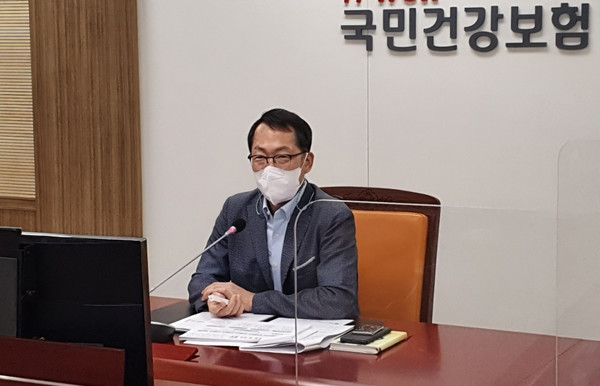As the consumption of respiratory medications, including cold medicines, spiked in the first half due to the spread of the Omicron variant, some industry officials said the government should exclude respiratory drugs from the price-volume agreement (PVA).
However, the government said it would keep respiratory drugs under the PVA but allow the easing of drug price cut rates instead.

Jung Hae-min, director-general of the National Health Insurance Service’s (NHIS) Drug Management Department, told reporters on Tuesday that the government was reviewing a plan to adjust respiratory medication usage between February and May when Covid-19 cases peaked in Korea.
In December 2020, the NHIS started applying PVA to respiratory treatments to stabilize the supply of Covid-19 treatments. Under the revised guidelines, the government should correct the negotiation reference price in consideration of a temporary increase in the consumption of medicines used for infectious diseases, including Covid-19.
Under the guidelines, the NHIS plans to ease the price cut rates by adjusting the amount of usage of respiratory drugs between February and May rather than excluding them from PVA, NHIS said.
“We are discussing ways to adjust the amount of Covid-19 treatments through a meeting with the private-public consultation body and the pharmaceutical industry,” Jung said. “Once we complete the adjustment, we will apply it to Covid-19 treatments if they are selected for negotiations.”
He said some pharmaceutical companies asked the NHIS to withdraw claims of respiratory medications sought between February and May when Covid-19 cases surged.
As the drug billings in this period will remain valid until August, the NHIS will assess the total usage of respiratory drugs excluding the claims of that period, review medications for Covid-19 designated by the Ministry of Food and Drug Safety, and consult with the private sector to discuss which of the adjustment measures the NHIS will take, he added.
The NHIS also said it completed the drug price negotiation under the PVA “type C,” introduced in April to make negotiations more efficient. The NHIS expects that the new type of PVA will contribute to “significant fiscal savings.”
The PVA type C allows a drug price cut through negotiations between a drugmaker and the NHIS if the drug claims increased by 60 percent or more in 2021 compared to 2020 or if the drug claims increased by 10 percent or more and the increased volume is 5 billion won ($3.7 million) or more.
This year, the NHIS completed negotiations for 173 drugs in 52 product groups with 37 pharmaceutical companies under PVA type C. The government will re-negotiate for two medications in one product group.
According to Jung, the average billing for drugs added by the arithmetic average price adjustment in the same product group was about 16.23 billion won, and the average billing for drugs excluded by the upward adjustment of claims was about 1.7 billion won.
Thanks to the revised guidelines, the NHIS could reduce administrative costs by excluding drugs with small claims and expanding follow-up management of medicines that significantly impact health insurance finance, he explained.
In 2021, PVA type C led to negotiations for 128 items in 59 product groups. As a result, the average price cut rate was 6.7 percent, and the NHIS recorded 26.74 billion won in fiscal savings.

